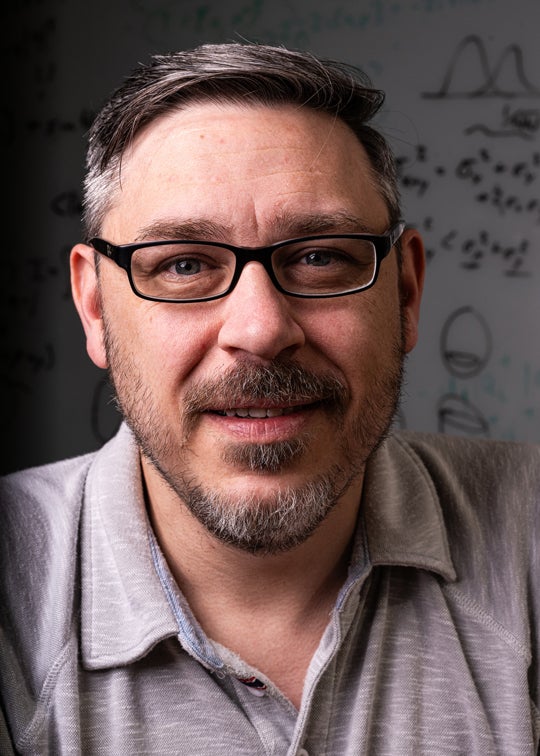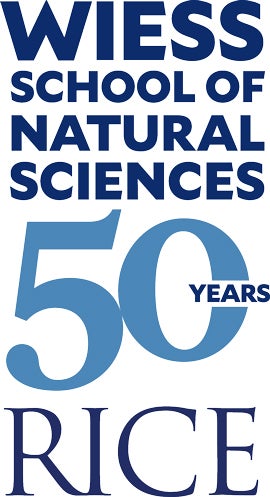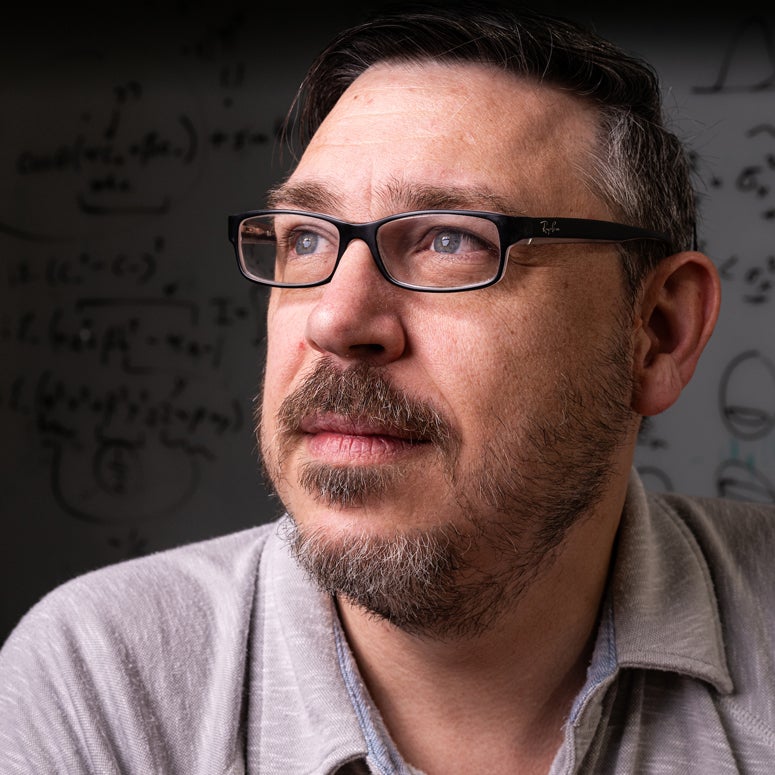
Kaden Hazzard’s fascination with physics began in high school, driven by a sense of wonder about the complex forces shaping the universe. “There were all these mysterious things going on in the world around us,” he recalled. “It was very tantalizing to think that with just a few equations, you could, in principle, explain so much about the universe. At the same time, it was very frustrating because we hadn’t yet managed to explain everything. That’s what got me hooked.”
This early curiosity evolved into a profound interest in connecting fundamental equations to real-world phenomena, eventually leading to his pursuit of advanced studies in ultracold atomic physics and condensed matter. Today, Hazzard’s research focuses on exploring the properties and behaviors of quantum systems.
“A major focus in our group is synthetic dimensions and high-symmetry systems,” he explained. Synthetic dimensions enable the creation of higher-dimensional systems using internal states of atoms, offering a unique platform to explore exotic states of matter. Hazzard’s work in this area focuses on ultracold atomic systems, where atoms are cooled to near absolute zero, enabling precise manipulation and novel quantum behaviors. Through these systems, he investigates high-symmetry models to provide insight into novel phases of matter and their underlying properties.
His focus on innovative approaches to quantum systems directly informs his work as the director of the Rice Quantum Initiative, driving its mission to connect fundamental quantum research with practical applications.
“The Rice Quantum Initiative broadly covers quantum science in this modern sense, where we are interested in the applications of quantum science and engineering to computation, communication and sensing,” Hazzard said. He also emphasized that while their work explores these applications, it goes much deeper, encompassing some of physics’s most fundamental questions.

In the past year, for example, the initiative has sponsored workshops on campus that have drawn researchers from around the globe to stimulate research at the frontier of interdisciplinary fields including quantum information processing, quantum vacuums and quantum materials. Hazzard said the initiative’s comprehensive approach allows Rice to contribute to the broader scientific community’s understanding of quantum physics and to continue pushing the boundaries of what is known about the quantum world.
“The Rice Quantum Initiative involves faculty from many different departments, including the sciences and engineering,” Hazzard said. “We have people in math and physics answering fundamental questions about quantum theory, which leads to new ideas about materials and devices. Electrical engineers explore these insights, while computer scientists collaborate to design algorithms tailored to the hardware we study.”

The initiative is administered by Rice’s Smalley-Curl Institute (SCI), and Hazzard said its approach both enables a comprehensive exploration of quantum science and continues a longstanding tradition of interdisciplinary, interdepartmental collaboration that dates to the formation of the SCI’s forerunner more than 40 years ago.
Hazzard is especially passionate about the initiative’s role in student development, stating that it will bring tangible benefits to undergraduate students on both research and teaching fronts. “Undergraduates are heavily involved in research,” he emphasized. Students participate in cutting-edge projects and learn to communicate across fields, gaining experience and developing skills that prepare them for a wide range of careers — in academia, industry or other paths altogether.
“The idea of being able to go and work with people from different departments is very, very valuable in its own right,” Hazzard noted. In addition to promoting research opportunities, the initiative has also encouraged the development of new course offerings, including specialized quantum computing classes, thus creating additional opportunities for students to engage directly with quantum science.
Under Hazzard’s leadership, the initiative is more than a research program — it is a hub for innovation, collaboration and education. Its interdisciplinary approach and commitment to excellence aredriving progress toward a quantum-enabled future. As Hazzard emphasized, “Quantum science is a booming field. It is intellectually rich and full of opportunities to make meaningful contributions.”
-Niamh Ordner ’26

